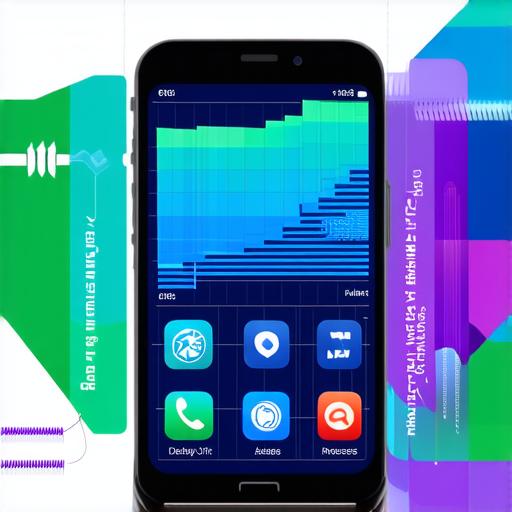Introduction
In today’s digital age, apps have become an integral part of our daily lives. From social media to shopping, entertainment, and health, there is an app for almost everything we need. But what sets successful apps apart from the rest? One key factor is user experience (UX), which refers to how users perceive and interact with a product or service. In this article, we’ll explore how service development can enhance UX by using real-life examples and expert insights.
What is Service Development?
Service development is the process of creating, improving, and delivering services that meet the needs of users. It involves understanding user requirements, designing solutions, and testing them to ensure they are effective and efficient. In the context of apps, service development involves developing features, fixing bugs, and updating the app regularly to improve the user experience.
The Impact of UX on App Success
User experience is a crucial factor in determining an app’s success. According to a study by Localytics, 86% of users will abandon an app after just one use if they don’t find it useful or enjoyable. In contrast, apps with a positive UX are more likely to be downloaded and used regularly, leading to higher user engagement and retention rates.
One example of how service development can enhance UX is the popular ride-hailing app, Uber. By constantly improving their app’s features and design, Uber has created a seamless experience for their users. From easy navigation to real-time tracking, Uber’s app has made it simple for users to get where they need to go quickly and efficiently.
How Apps Improve UX
Personalization
Personalization is a key aspect of enhancing UX in apps. By tailoring the user experience to individual preferences, apps can create a more engaging and satisfying experience for users. For example, Spotify’s personalized recommendations feature suggests songs based on a user’s listening history and preferences, making it easy for them to discover new music that they’ll love.
Speed and Performance
Apps that load quickly and run smoothly are essential for enhancing UX. Users expect apps to be fast and responsive, and any delays or glitches can lead to frustration and disengagement. For instance, Google Maps has a feature called "OK Google" that allows users to search for things without having to navigate to the search bar. This quick and efficient search experience makes it easy for users to find what they’re looking for quickly.
Accessibility
Accessibility is another important factor in enhancing UX in apps. By making their app accessible to all users, including those with disabilities, developers can create a more inclusive experience that caters to everyone’s needs. For example, the popular food delivery app, DoorDash, has an accessibility feature that allows users with visual impairments to use voice commands to navigate and order food.
Feedback and Support
Feedback and support are critical for improving UX in apps. By providing users with a way to provide feedback on the app’s performance, developers can identify areas where the app needs improvement and make updates that address user concerns. Additionally, providing users with access to support resources, such as FAQs or customer service, can help them troubleshoot issues and resolve problems quickly.
Real-Life Examples of Service Development in Apps
Instagram’s Explore Page
Instagram’s explore page is a great example of how service development can enhance UX in an app. When the app was first launched, users had to manually search for content they were interested in. However, as the app evolved, Instagram introduced the explore page, which suggests content based on a user’s activity and engagement with other users. This personalized experience has made it easier for users to discover new content that they’ll love and has helped keep them engaged with the app.

Amazon’s Recommendations Algorithm
Amazon’s recommendation algorithm is another example of how service development can enhance UX in an app. By analyzing a user’s purchase history, browsing behavior, and other data points, Amazon suggests products that are relevant to the user’s interests. This personalized experience has made it easy for users to find new products they might like and has helped increase their likelihood of making a purchase.
Airbnb’s
Personalization
Features
Airbnb is another great example of how service development can enhance UX in an app. By providing users with personalized recommendations based on their preferences, Airbnb makes it easy for users to find the perfect accommodation that suits their needs. Additionally, Airbnb’s search feature allows users to filter results by price, location, and amenities, making it easy to find the perfect place to stay.
Expert Insights on Service Development in Apps
"User-centered design is key to creating a successful app." – Danielle Mohn, Senior UX Designer at Facebook
According to Danielle Mohn, user-centered design is crucial for creating an app that meets the needs of users. By understanding user requirements and designing solutions that are intuitive and easy to use, developers can create apps that provide a seamless experience for users.
"Incorporating feedback from users can help you identify areas where your app needs improvement." – Dr. Nir Eyal, Behavioral Scientist and Author of Hooked
Dr. Nir Eyal argues that incorporating feedback from users is essential for improving UX in apps. By collecting user feedback and using it to inform updates and improvements, developers can create an app that meets the needs of their users and keeps them engaged over time.
"The key to a successful app is ongoing service development." – Mike Cohn, Agile Software Coach and Author of Sprints: How My Team Learned to Run Better Projects in Less Time
Mike Cohn emphasizes the importance of ongoing service development for creating a successful app. By constantly improving the app’s features and design
